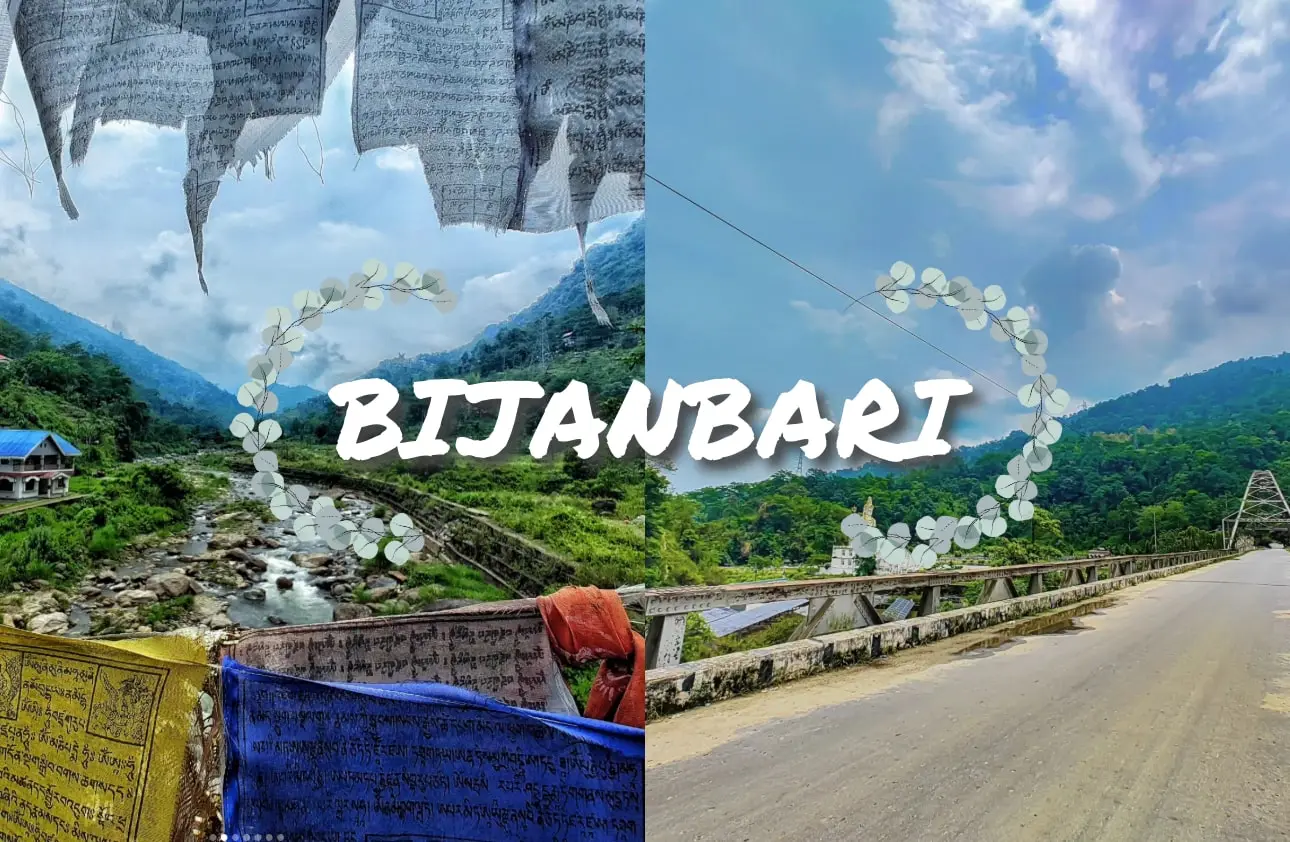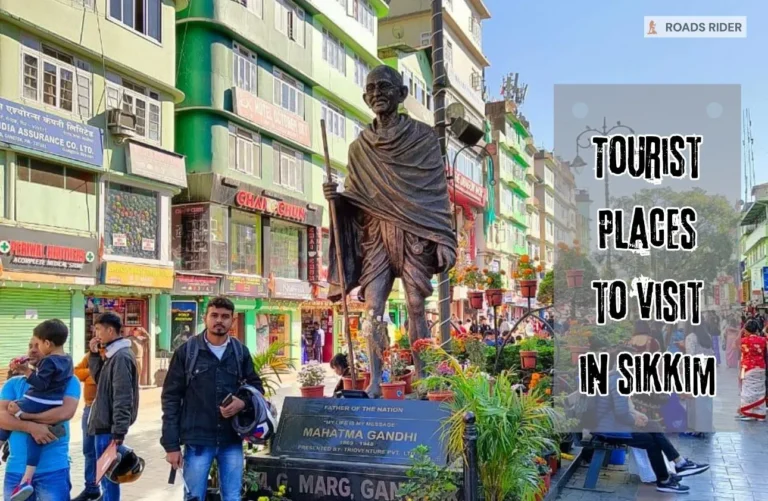Bijanbari, Darjeeling’s Hidden Retreat Just 12.5 km from the City

Darjeeling is known for its majestic mountains, lush tea gardens, and the famous toy train. Still, there are lesser-known gems like Bijanbari, which offer a more intimate experience of the region’s natural beauty.
Bijanbari is around 12.5 kilometres below the main town of Darjeeling, Bijanbari is a peaceful village that embodies the charm and tranquillity of the Himalayan foothills. With its rich history, unique culture, and captivating landscapes, Bijanbari has emerged as a must-visit destination for those seeking an offbeat travel experience.
Table of Contents
The Charm of Bijanbari: A Glimpse into Its History
Bijanbari’s appeal lies in its unspoiled beauty, lush tea plantations, and river valleys. Located approximately 12.5 kilometres from Darjeeling town, this quiet settlement along the Little Rangeet River offers a serene retreat away from the hustle and bustle of city life.
It holds historical significance as an old agricultural hub, where farming and tea plantations have long supported the local economy. The verdant fields, sprawling across the valley, contribute to its scenic beauty, making Bijanbari a nature lover’s paradise.
Over the years, Bijanbari has attracted travellers with its authenticity untouched by rapid commercialization. As you walk through the village, you’ll encounter traditional Nepali architecture, prayer flags fluttering in the wind, and warm hospitality from the locals who still practice time-honoured customs.
Key Attractions of Bijanbari
1. Little Rangeet River Valley:
The Little Rangeet River flows through the heart of Bijanbari, creating an idyllic setting perfect for picnics, riverside strolls, and quiet reflection. The sound of the rushing water against the backdrop of the lush valley sets a peaceful tone for visitors. Adventurous travellers can enjoy trekking trails that follow the river, offering spectacular views of the surrounding mountains.
2. Tea Gardens:
Bijanbari is home to several tea gardens, where visitors can experience the heritage of Darjeeling’s world-famous tea culture. Take a tour of these plantations to learn about the tea-making process, meet the local workers, and enjoy a tasting session of freshly brewed tea. The small yet significant tea estates in Bijanbari provide an authentic, immersive experience of the tea industry, away from the larger commercial estates in Darjeeling town.
3. Dhirdham Temple:
For those interested in spiritual experiences, Dhirdham Temple offers a tranquil space for meditation and reflection. The temple, with its beautiful architecture inspired by the famous Pashupatinath Temple in Kathmandu, is dedicated to Lord Shiva. Surrounded by lush green hills, it’s the perfect place to experience the harmony between nature and spirituality.
4. Organic Farms and Local Markets:
One of Bijanbari’s unique experiences is visiting its organic farms. Many locals practice organic farming, growing fresh vegetables, fruits, and herbs. A visit to the village’s small markets is an opportunity to see these fresh products and interact with farmers who are passionate about sustainable agriculture.
5. Singla Bazar and Singla Tea Estate:
Just a short drive away from Bijanbari, Singla Bazar and the Singla Tea Estate provide another fantastic opportunity for travellers. The bazaar is a local marketplace where visitors can experience the daily life of the villagers and pick up local handicrafts. The Singla Tea Estate offers more tea-related experiences, including walks through the plantation and the opportunity to purchase fresh Darjeeling tea.
6. Breathtaking Views of the Himalayas:
Like much of the Darjeeling region, Bijanbari offers stunning views of the mighty Himalayas. Early risers are treated to breathtaking sunrises that paint the mountain peaks in shades of pink and gold. On a clear day, the distant views of Mount Kanchenjunga, the third-highest mountain in the world, are awe-inspiring and make for perfect photo opportunities.
How to Reach Bijanbari
Reaching Bijanbari is part of the adventure. Here’s how you can get there:
By Train:
The nearest major railway station is New Jalpaiguri Railway Station (NJP), located about 95 kilometres from Bijanbari. NJP is well-connected to major cities like Kolkata, Delhi, and Guwahati. From NJP, you can either hire a taxi directly to Bijanbari or take a shared vehicle to Darjeeling and then another to Bijanbari. The journey by taxi from NJP costs around ₹3,500 to ₹4,000 and takes approximately 3-4 hours.
By Air:
The closest airport is Bagdogra Airport, around 90 kilometres from Bijanbari. From the airport, you can book a prepaid taxi or hire a private car to take you to Bijanbari. The taxi fare typically ranges between ₹3,000 and ₹3,500, depending on the vehicle type. You can also opt to travel via Darjeeling first and then head to Bijanbari by road.
By Road:
Bijanbari is easily accessible by road from Darjeeling, with regular buses and shared jeeps plying the 12.5-kilometer stretch. The drive takes about 1.5 to 2 hours and offers spectacular views along the way. The fare for a shared jeep from Darjeeling is around ₹100 to ₹150 per person, while a private taxi may cost approximately ₹1,500.
Best Time to Visit Bijanbari
Bijanbari enjoys a pleasant climate throughout the year, but the best time to visit is from March to June and September to November. During these months, the weather is ideal for outdoor activities, and the natural beauty of the area is at its peak.
The summer months (March to June) offer mild temperatures and clear skies, perfect for sightseeing and trekking, while the post-monsoon season (September to November) brings vibrant greenery and fresh air.
Winter, from December to February, is also an option for those who enjoy the crisp, cool weather and are looking for a quiet retreat. However, temperatures can drop significantly, so be prepared with warm clothing.
Accommodation Options
Bijanbari offers a range of accommodations catering to different budgets:
- Budget Stays:
For budget travellers, there are small guesthouses and homestays in the village, offering basic yet comfortable facilities and warm hospitality. Prices range between ₹500 and ₹1,200 per night, and the opportunity to stay with local families provides an authentic experience of Bijanbari’s culture. - Mid-Range Hotels:
There are a few mid-range hotels in and around Bijanbari offering better amenities, such as hot water, attached bathrooms, and scenic views. Prices typically range from ₹1,500 to ₹3,000 per night. These accommodations are perfect for travellers looking for comfort without breaking the bank. - Luxury Resorts:
While Bijanbari does not have high-end luxury resorts, nearby areas such as Darjeeling offer luxury accommodation options. Many travellers choose to stay in Darjeeling and take day trips to Bijanbari.
Food and Cuisine
Bijanbari is a food lover’s delight, especially for those who enjoy sampling local cuisine. Nepali, Tibetan, and Indian influences dominate the food culture here. Some must-try dishes include:
- Momos: Steamed dumplings filled with vegetables or meat, served with spicy chutney.
- Thukpa: A hearty noodle soup, perfect for cold evenings.
- Sel Roti: A traditional Nepali ring-shaped rice bread, crispy on the outside and soft on the inside.
- Gundruk: Fermented leafy greens served as a side dish or in soups.
Local eateries in Bijanbari offer a homely dining experience, and there are a few restaurants serving delicious meals at affordable prices. Don’t miss the opportunity to try freshly brewed Darjeeling tea at one of the tea stalls while enjoying the serene surroundings.
Nearby Attractions
If you have extra time, there are several nearby attractions worth visiting:
- Darjeeling Town: Just an hour’s drive away, Darjeeling offers attractions like the Darjeeling Himalayan Railway, Tiger Hill, and the bustling Mall Road.
- Maneybhanjang: The gateway to the popular Sandakphu trek, Maneybhanjang is only 40 kilometres from Bijanbari and makes for an excellent day trip.
- Singalila National Park: A paradise for trekkers and wildlife enthusiasts, this national park is known for its rich biodiversity and stunning views of the Himalayan range.
Conclusion
Bijanbari, Darjeeling, is the perfect destination for those looking to explore the quieter, more authentic side of the region.
Whether you’re drawn by its beautiful river valleys, tea gardens, or spiritual sites, Bijanbari promises an unforgettable experience filled with nature, culture, and tranquillity.
Far from the crowds, this offbeat destination offers a refreshing break from the usual tourist circuit, making it a must-visit for every traveller seeking peace and adventure.






